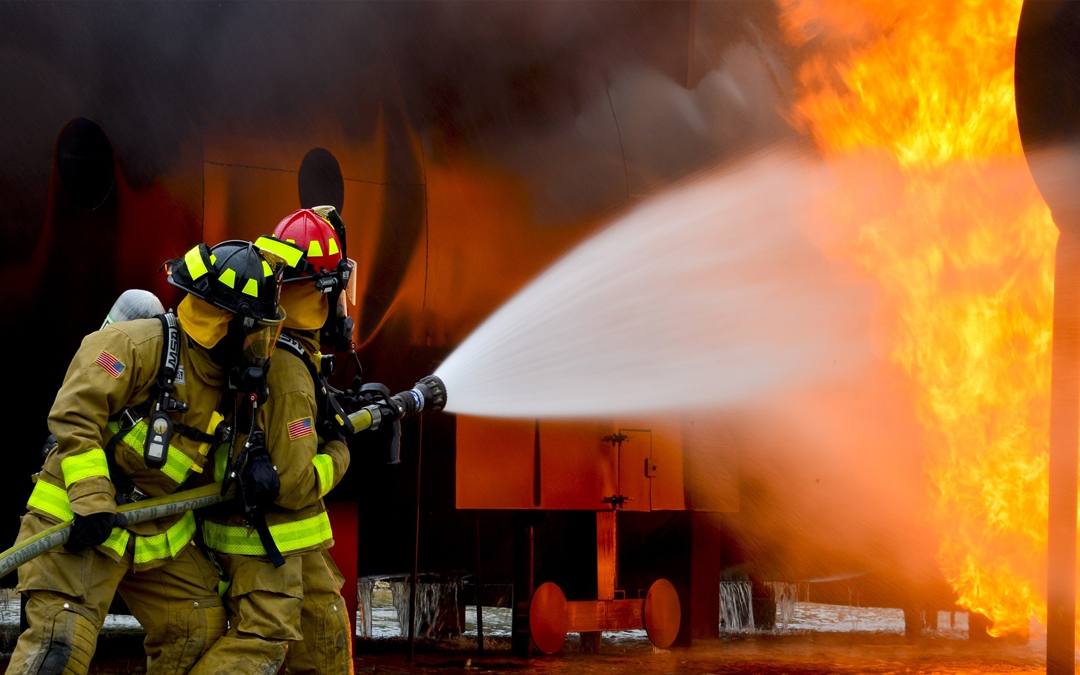As a business owner or employer, you are responsible for fire safety in your workplace. You are legally designated the ‘responsible person’ and as such must follow certain regulations.
The local fire and rescue authority helps enforce these regulations, periodically inspecting buildings to ensure that they are up to code. If they spot serious risks, they have the right to issue an enforcement notice or even a prohibition notice.
An enforcement notice requires the owner to make specific changes by a certain date. A prohibition notice says that the premises are so dangerous that they have to be shut down until improvements are made.
If your business is issued one of these citations, you have the right to appeal within 21 days. Minor penalties for not following safety regulations can result in a £5,000 fine. A major penalty can include a prison sentence and/or a fine of any amount.
In order to protect your workers and yourself, you’ll need to follow these guidelines. This article is not meant to be a comprehensive review of all fire safety legislation, but we’ve provided links to government sites for more detail where appropriate.
Perform and periodically update a fire risk assessment
A fire safety risk assessment is designed to spot and remedy potential hazards before a problem occurs. Specifically, you need to look for any potential fire hazards and identify workers who may be as risk. Remove any hazards you can, and then if a risk cannot be eliminated, mitigate it as much as possible.
Communicate the results of your risk assessment to your employees. If your business consists of 5 or more people, this assessment must be in writing. Update the risk assessment on a periodic basis and when any substantial change to your business occurs.
The government provides detailed fire safety advice guides for performing risk assessments for various types of businesses. You can contact your local fire company if you have questions or want to get advice, though they do not perform risk assessments.
Install and Maintain Proper Equipment
All businesses are required by Buildings Regulations 2010 made to have a fire detection system. The type of building and the type of business may dictate special requirements for detection, but all buildings must meet basic regulations. You’ll also need to install the proper fire fighting equipment appropriate for your business.
Perform maintenance as required and test all systems regularly to make sure everything works properly. Items to include:
- Testing fire alarm systems
- Checking that automatic fire doors close correctly
- Testing emergency lighting
- Making sure fire exits are marked very clearly and open easily
- Ensuring proper ventilation if working with flammable gas or vapour
- Using extraction systems if working with flammable particles such as wood dust.
If you find any faults while doing periodic maintenance checks, keep a running documentation of the issues encountered and how they were resolved.
Create an emergency fire plan
An emergency fire plan is designed to get people out of harm’s way as quickly and safely as possible without causing panic. The best way to achieve these goals is to have a clearly thought out plan and then train your staff so they’ll know what to do. Essential elements include:
- Making sure escape routes are never blocked, cluttered, or locked
- Clearly marking escape routes and making sure employees know their closest exit
- Determining if you have enough exits and escape options for people to get out quickly without panic
- Checking that emergency doors are in working order and adding reflective tape and/or emergency lighting to make exits easy to find
- Designating a staff meeting point for people to gather once they have left the building, so you can easily identify anyone still missing.
Provide fire training and safety information to all employees
Train all new employees and provide periodic drills for the entire team to make sure no one forgets your emergency plan. You are required to conduct at least one fire drill per year. Document the results of this mandatory drill and store it with your emergency fire plan.
Make sure that employees know how to act if a fire breaks out and that they understand:
- Emergency exits and escape routes
- Fire warning and safety systems
- Where you keep fire extinguishers are how to use them
- Storage and disposal of hazardous materials (if applicable)
- Being aware of any employees with special needs.
For more detailed information and regulations for Scottish and Welsh firms, check out the Health and Safety Executive (HSE) fire safety website.
Alternatively, click here for our guide on fire exit door regulations for businesses or here for fire door regulations. If you don’t know the difference between a fire door and fire exit door, click here.
If you need effective fire protection at your workplace, get in touch with us today by calling (0)1384 220 050 or contact us online.


